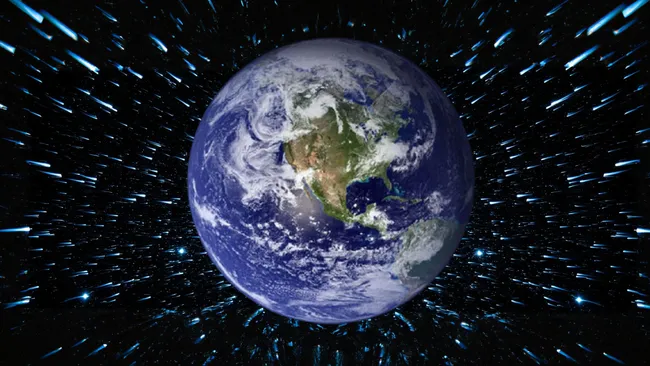If you thought of Earth’s entire history as a single day, as in Carl Sagan’s cosmic calendar, humans wouldn’t arrive until the last few seconds before midnight. The several hundred thousand years of our species’ existence are only a small fraction of our planet’s history. So how old is our planet and how do we know its age?
Earth formed approximately 4.54 billion years ago, approximately 10 million years after the birth of the solar system. After the huge gas cloud collapsed to form the sun, pieces of that cloud were left behind to form planets.
“I like to compare early solar systems to pizza,” said Mark Popinchalk, an astronomer at the American Museum of Natural History and New York University. “If the gas cloud from which the star forms is a ball of dough, it may look like a blob at first, but it will initially have some spin. A star will form from 99% of this ‘dough’, but the rest still has that spin and, given enough time, will form around the star.” “It will flatten like a pizza. All the planets are made up of this 1% of the ‘dough’.”
However, Baby Earth was nothing like the lush world we know today. When it formed, it was still molten from the collisions that created it. While heavier elements such as iron sank and formed the core of our planet, lighter elements exploded and rose to the surface. This ultimately led to a layered Earth consisting of a core, mantle, and crust.
When the solar system calmed down and fewer asteroids hit Earth, oceans formed and life appeared almost immediately. “Although humans have not existed for most of Earth’s history, there has been a continuous streak of cellular life going back about 3.5 billion years,” Popinchalk said. (A new study suggests that number may have been even higher, by 4.2 billion years ago!)
We owe our knowledge of this timeline to the real ground on which we stand; Rocks are key to determining the age of the Earth and what it was like in the past. Through a process known as radiometric dating, scientists can use the amounts of different radioactive elements to determine how old a stone is. Earth rocks can be misleading because “the Earth is an active and busy place,” Popinchalk said. “Volcanoes, weather patterns and geological processes mean that the rocks from which the Earth was formed are difficult to find.”
However, the Moon was formed by a collision with our embryonic planet and does not have Earth’s bad plate tectonics. Lunar rock samples from the Apollo era have helped refine estimates of our planet’s age, and new samples from missions like Chang’e 5 are adding to our understanding of the Moon’s history.
For nearby planets like Mars, we could send a rover to collect rocks and analyze them to determine their age. But how to determine the age of planets around others? Stars we can’t travel to?
“The best way to learn about planets around other stars is to study the star itself,” Popinchalk said. “I specialize in estimating the age of a star by looking at how fast it spins. Young stars rotate fast, old stars rotate slowly. If I can measure the rotation rate of a star containing planets, I can estimate the age of the star. Use a similar number for stars and a planet.”
As we discover and characterize new worlds outside our solar system, we learn more about how planets form, helping us better understand the history of our own planet.
Source: Port Altele
